This year’s India International Jewellery Show (IIJS) reported a 14 per cent increase in traffic from 2017, welcoming over 40,000 registered visitors from 80 countries.
Announced by official organiser the Gem and Jewellery Export Promotion Council (GJEPC), the attendance is an all-time visitor record for the five-day event, which took place at the Bombay Exhibition and Convention Centre from August 9 to August 13.
A Preview Day was held before the opening for select international buyers, leading retailers, chains and industry leaders to conduct priority business and experience the new layout of the floor where over 1,800 exhibitors presented across the 62,000sqm trading space.
To accommodate the size of the growing show, the GJEPC increased the total trading floor with Hall 7A, 10,800sqm of additional space that accommodated 800 more exhibitors and multi-storey booths.
As a result of a bigger show, tighter security checks and measures increased, which created unintended bottleneck traffic when visitors transitioned between halls.
In his opening address, GJEPC chairman Pramod Agrawal explained why he believes there’s been an increase in traffic: “India is the leading diamond manufacturing centre; the fourth largest jewellery supplier to the world and a renowned centre for coloured gemstones,” he said.
“[The IIJS] flagship show demonstrates that India’s jewellery manufacturing has come of age and is widely acclaimed as a reliable and competitive source for retailers and consumers from across the world.”
Agrawal stated that the gem and jewellery export contributes seven per cent to India’s GDP, which totals $US41 billion with over five million people currently employed in the sector. The Council predicts that exports of completed jewellery and loose stones and diamonds will grow between 15 and 20 per cent by end of 2018.
He also highlighted that the Council was working closely with the government to achieve its vision of adding two-million jobs in the sector and increasing exports by six to seven per cent each year to reach $US70 billion by 2022.
Dusting off after a fall
Earlier this year the GJEPC predicted that a 10 per cent decline in bank finance to the gem and jewellery sector would adversely impact industry exports, highlighting that exports in the April/June 2018 quarter stood at $US10.1 billion as compared to $US11.1 billion in the same period in 2017, an 8.8 per cent decline.
“Bank finance is the lifeline of the industry and any decrease would see a decrease in gem and jewellery exports as well,” GJEPC vice chairman Colin Shah said in a statement back in July.
“Post the recent incident, banks and other financial institutions have become stringent and are insisting on much higher collateral security against bank finance.”
Since the show, however, Shah has been more upbeat, describing the event as a reflection of “the definite vibrancy in the market at present”.
“With the Indian economy performing well, there is a strong hope that the industry is entering a period of prosperity,” he said at the event.
When asked about whether banks are less willing to finance the diamond sector since the Modi scandal, Dharmanandan Diamonds sales director Vipul Sutariya told Jeweller, “The banking problem primarily affects smaller and newer players with little financial history or time in the market. On the other hand, it improves long-term prospecting since banks will be more honed to finance businesses on profitability. So in the longer term, it is a good move.”
Sutariya believes a weaker rupee to the dollar has helped stimulate export adding, “If you see the export figures, the market growth is not bad. We export 90 percent of our production – less than ten per cent is consumed locally. In these terms, it’d favour us if the rupee goes down since local labour is paid in rupees. A weaker rupee could be seen as an opportunity for both the local and global market.”
While the local industry might still be recovering, its consumers are on the rise, with the reported growth of India’s middle-class. The Diamond Producers Association (DPA), an international organisation aiming to maintain and enhance consumer demand and confidence in natural diamonds, has recognised this as an opportunity and launched a $US70 million global marketing campaign targeting India, China and the US as its main strategic markets.
Working with the GJEPC to launch the DPA’s most recent diamond campaign in India is DPA CEO Jean-Marc Lieberherr.
“Our role is to make everyone’s investment [into these campaigns] work a lot harder,” he said in a press conference at the event. “It’s not the amount [of money] in itself but it’s also our ability to amplify everything that we’re doing and to speak with one voice with retailers.”
According to the DPA, fewer than ten per cent of women in India own a diamond compared to 20 per cent of Chinese and 70 per cent in the US. Owing to a recovering economy and a growing Indian middle class, the DPA remains confident it can increase the local diamond market over the next decade.
Given India’s history as the first place of diamond discovery and central point of diamond manufacturing, Lieberherr believes that the time for this opportunity is right.
“Polished prices are growing,” he added. “If we look at India specifically, the best possible proxy is the share of India as part of the total market, which is seven per cent today. We know that emerging markets are usually going to become the price leaders.”
Initiatives to strengthen India
With the global trade still suspended in uncertainty and India’s domestic diamond trade stabilising, the GJEPC has focused on cultivating local industry and talent.
At the IIJS, the Council designated exhibition space for start-ups and local female entrepreneurs, including an area to celebrating the history and heritage of jewellery artistry in India.
Colin Shah said, “GJEPC is poised to give and sustain a positive momentum that the gem and jewellery sector is in need of at this point of time. We are launching an international campaign, featuring India’s skills and capabilities in manufacturing world class jewellery.”
He unveiled the GJEPC’s new promotional campaign featuring images of people in the jewellery workforce and key facts about the local trade such as its contribution to the GDP, employment rate and welfare schemes. This initiative was designed to communicate lesser known but important aspects of the industry.
Recently the GJEPC surveyed its local industry to better understand the workforce across key jewellery and gemstone manufacturing districts across India. The aim was to develop action plans to stimulate the industry.
The Council has now taken steps to enhance the educational infrastructure by developing a chain of training institutions, participating in a global campaign for the promotion of natural diamonds and engaging in extending invitations for trade.
Agarwal shared a larger vision to establish common facility centres and jewellery parks at all major gem and jewellery districts throughout India, which would help boost export trade and improve the living standards of workers within the industry.
Rong Julius Zheng, vice president of the Shenzen Rough Diamond Exchange, signed an MoU with GJEPC announcing that it will also set up an office in Shenzen. Zheng emphasised that China, as the second largest consumer of diamond jewellery, looked to India to source a lot of products of the industry.
GJEPC’s executive director Sabyasachi Ray provided some insight into how he hopes they’ll work together: “India and China have a very close relationship in the diamonds and jewellery areas. In diamonds, India and China complement each other; we are not competing with each other in the kind of product being worked in the two centres.”
The GJEPC also organised the fourth Jewellers for Hope charity dinner in association with De Beers and the Gemological Institute of America (GIA), donating a total of Rs 1 crore ($US143,000) to three not-for-profit organisations that have served social justice causes in India. Fund recipients include Nobel Prize winner Kailash Satyarthi for his work to end child exploitation and trafficking in India and surrounding regions.
Gaetano Cavalieri, president of World Jewellery Foundation CIBJO, acknowledged the efforts of the GJEPC on opening day and affirmed that the organisations would continue working closely together.
“[The Council’s] activities are very central to India’s unique position globally in the business of gem and jewellery,” Cavalieri said. “We cannot go forward without India and hence look forward to fostering and maintaining a deep engagement with the GJEPC.”
Is it still mined over matter?
Only a week before IIJS, the US Federal Trade Council (FTC) stated that a diamond was a diamond whether it had developed naturally in the earth’s crust or was created in a lab. Lieberherr told reporters at the show that he disagreed with the FTC guidelines.
“We just asked for clarity because we saw that there was a lot of confusion and the limit between confusion and deception sometimes very thin. We got the opposite of clarity; we now have potentially a lot more confusion and that is what is concerning,” he said, adding that the ruling would “give marketers the opportunity to test the limits”.
“These kind of decisions like the one from FTC just reinforce the need for us to communicate effectively. A diamond is not just a molecular composition; it is billions of years in the making. Billions of years have meaning, especially in a time where we exist in a world where all we want is instant gratification and replication of everything, be it artificial intelligence or virtual reality.”
Lieberherr emphasised that the guidelines should be considered a loose framework that is meant to guide marketers with two primary objectives: to prevent consumer deception and to promote a competitive landscape.
“We think that it is not correct to say that they [natural and lab-created diamonds] are identical products. The fact that they can be distinguished with the right equipment, by looking at the growth structures and the nature of the inclusions make them inherently different products,” he added.
Liebherr believes there are bigger issues surrounding retail diamond sales, since luxury items are now competing with holidays and electronics. The main challenge remains how retailers can create a sensory experience around diamonds that appeals to all of a client’s senses.
“The biggest challenge for jewellery is that you’ve got a product that is small and expensive, and you’ve got to put it in a case,” he explained.
“Diamonds are transparent, and the same colour as the glass that’s on it. Unless you find a way to create a retail environment that really magnifies it, you’re separated by these blockades so the sensorial experience is very limited.”
When asked if Dharmanandan Diamonds plans to enter the lab-created diamond market, Sutariya strongly declined but understands that there is a market in the future for lab-created diamonds in India and sees that the two will exist alongside each other for different markets: “We are more concerned about our people – there are about one-million people dependent on the current natural-diamond industry.”
In a volatile market with uncontrollable obstacles in the way of global trade and a hard-to-read projection for the future of the diamond industry, the GJEPC appears to be gauging problems as opportunities and focusing on strengthening India’s local industry, using the IIJS event to leverage momentum.
The IIJS's Signature boutique show will be held in February 2019. Visit GJEPC for more information.
Angela Han attended the fair courtesy of GJEPC as an accredited media representative.
IIJS SHOW SNAPSHOTS
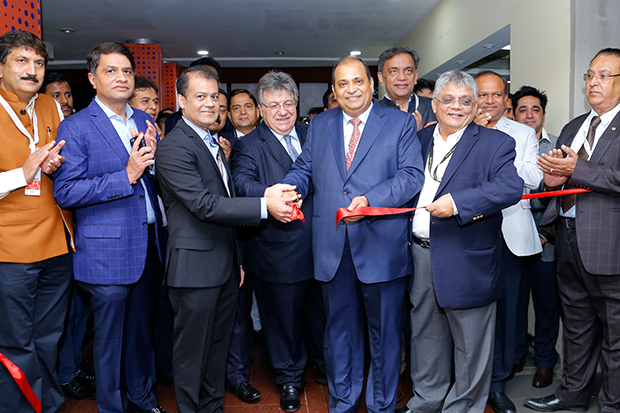
Above: The GJEPC executive team with sponsors cut the ribbon for event opening.
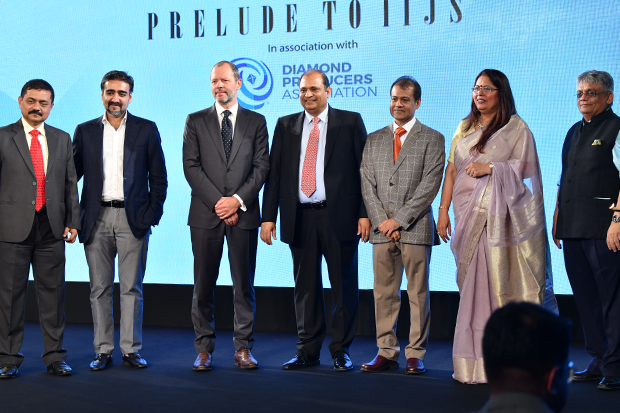
Above: The GJEPC executive team
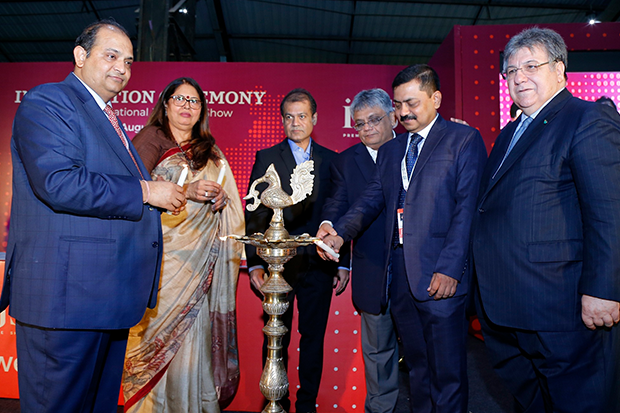
Above: GJEPC executive team and CIBJO president Gaetano Cavalieri at the candle lighting ceremony for the opening conference.
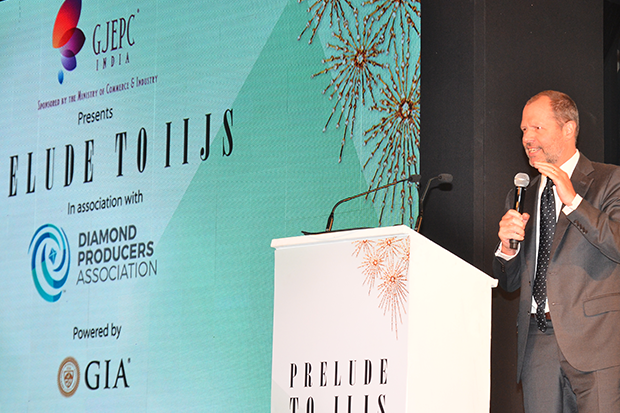
Above: Jean-Marc Lieberherr, CEO of Diamond Producers Association speaks at Prelude to IIJS, the extravagant jewellery fashion show.
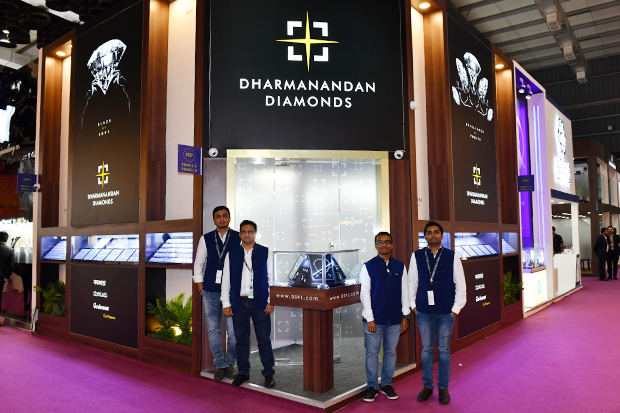
Above: Dharmanandan Diamonds in the new Hall7A with team members.
HANDS FOR HOPE CHARITY DINNER
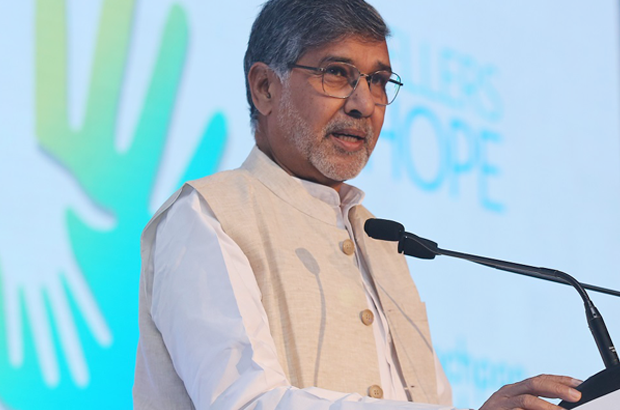
Above: Nobel Prize winner Kailash Satyarthi for his work to end child exploitation and trafficking in India and surrounding regions at the Hands for Hope dinner.
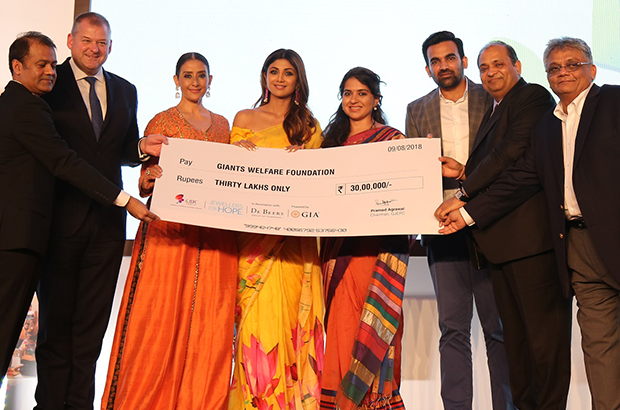
Above: GJEPC executive team with Mrs. Shilpa Shetty, Mr. Zaheer Khan, and Ms Manisha Koirala representing NGO Giants Welfare International.
Prelude to IIJS RUNWAY SHOW
India's rich culture of jewellery make for incredible viewing today, with modern adaptations that still come together in lavish designs that feature plenty of gold, detail and colour as evidenced in the 2-hour jewellery runway show.
See images and a recorded live broadcast of the night below.
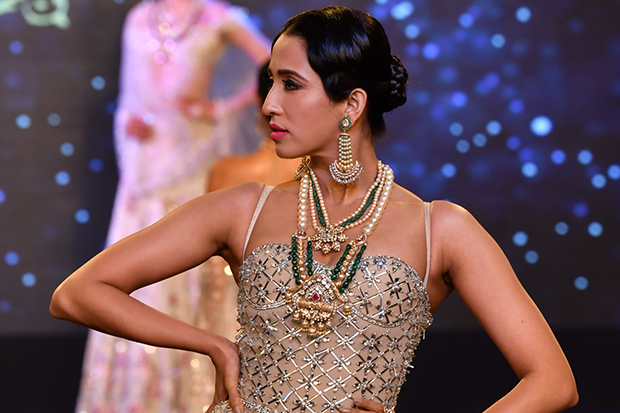

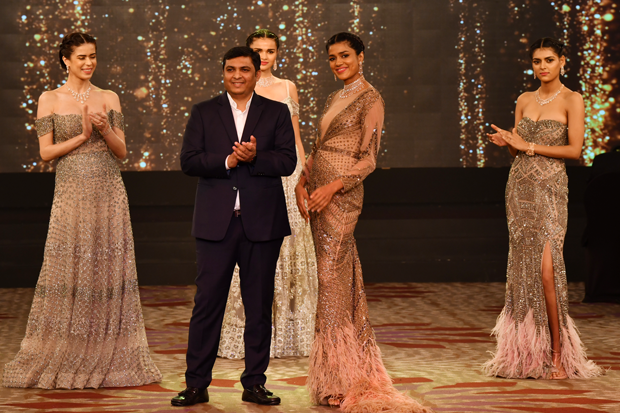


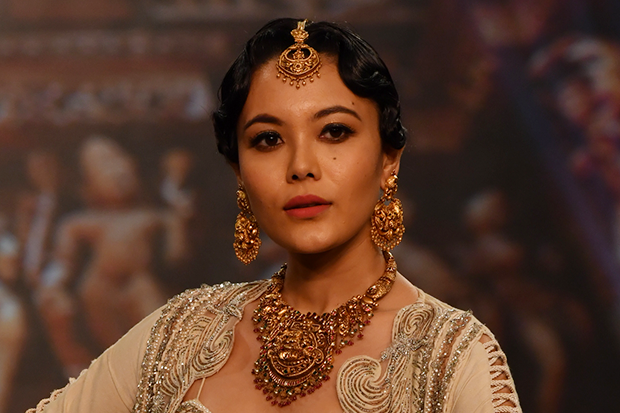
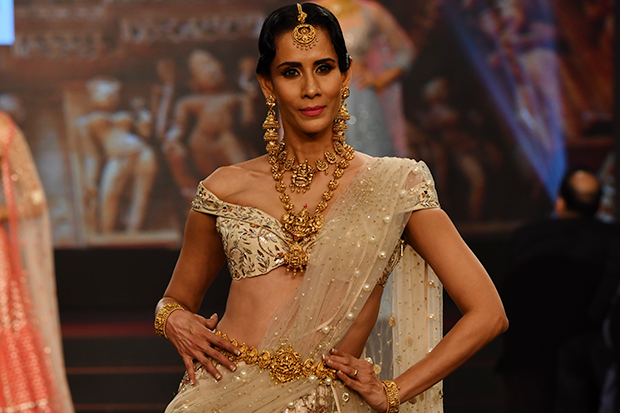



Images courtesy of GJEPC
WATCH VIDEO